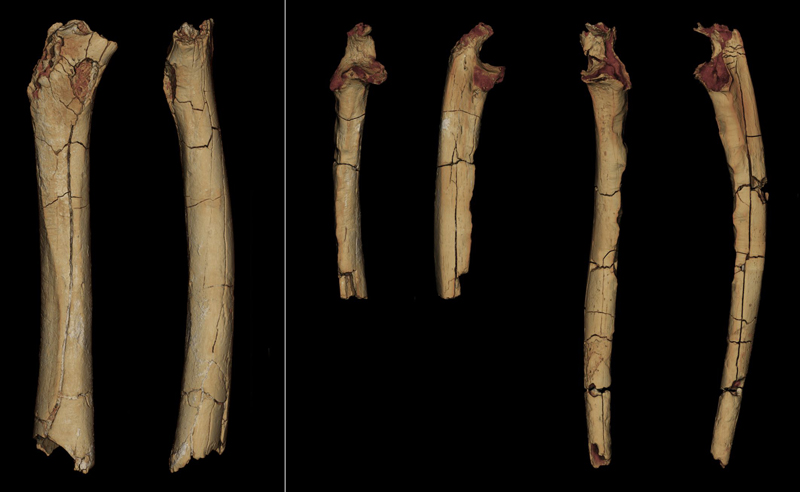The switch to walking on two legs, instead of four, is a major moment in the evolution of our species, which is why scientists are keen to pinpoint exactly when it happened – and a new study puts the adaptation as happening around 7 million years ago.
That’s based on a detailed analysis of thigh (femur) and forearm (ulna) fossils from Sahelanthropus tchadensis, the oldest representative species of humanity. These fossils were first discovered in Toros-Menalla in Chad in 2001.
At the same time, it’s probably likely these early hominins did a fair bit of tree climbing using all four limbs as well – as you would expect if the species made the gradual shift from four legs to two legs.
“Here we present postcranial evidence of the locomotor behavior of S. tchadensis, with new insights into bipedalism at the early stage of hominin evolutionary history,” write the researchers in their published paper.
By comparing the thigh and forearm fossils with the equivalent bones from humans, chimpanzees, and gorillas, the researchers were able to figure out the mechanics of how they were used, and how this species moved about (its “locomotor mode”).
A total of 20 different characteristics of the fossilized bones were used to establish whether S. tchadensis walked on two legs or four, including the outer shape of the remains and the internal structures, assessed via microtomography imaging.
They concluded that “habitual bipedality” with some tree climbing was the most likely scenario.
The team also suggests that there is a difference between the way the species climbed trees compared to gorillas and chimpanzees of today: with firm hand grips, rather than leaning back on finger and toe bones.
“The curvature and cross-sectional geometric properties of the ulna… are indicative of habitual arboreal behaviors, including climbing and/or ‘cautious climbing’, rather than terrestrial quadrupedalism,” write the researchers.
The research builds on an earlier study of a skull fossil dug up at the same site and thought to also belong to S. tchadensis. The skull analysis suggested that these ape-like creatures were bipedal, but now there’s more comprehensive evidence.
The fossils date from around the time (between 6-8 million years ago) that humans split off genetically from chimpanzees and bonobos, which are our closest still-living relatives, so it’s a crucial stage – and one that has already attracted plenty of scientific debate.
These early hominins would have probably lived in an environment that mixed forests, palm groves and grasslands, with both walking on two legs and clambering up trees being options for them as they looked for food and water.
“The most parsimonious hypothesis remains that the postcranial morphology of Sahelanthropus is indicative of bipedality and that any other hypothesis would have less explanatory power for the set of features presented by the material from Chad,” write the researchers.
The research has been published in Nature.


























